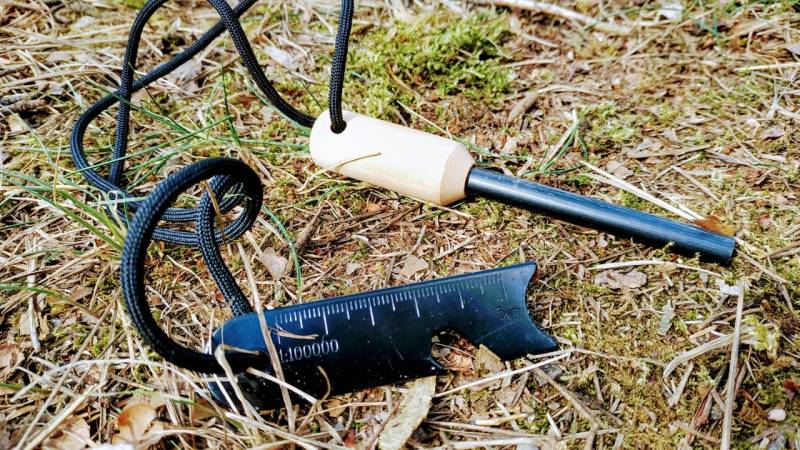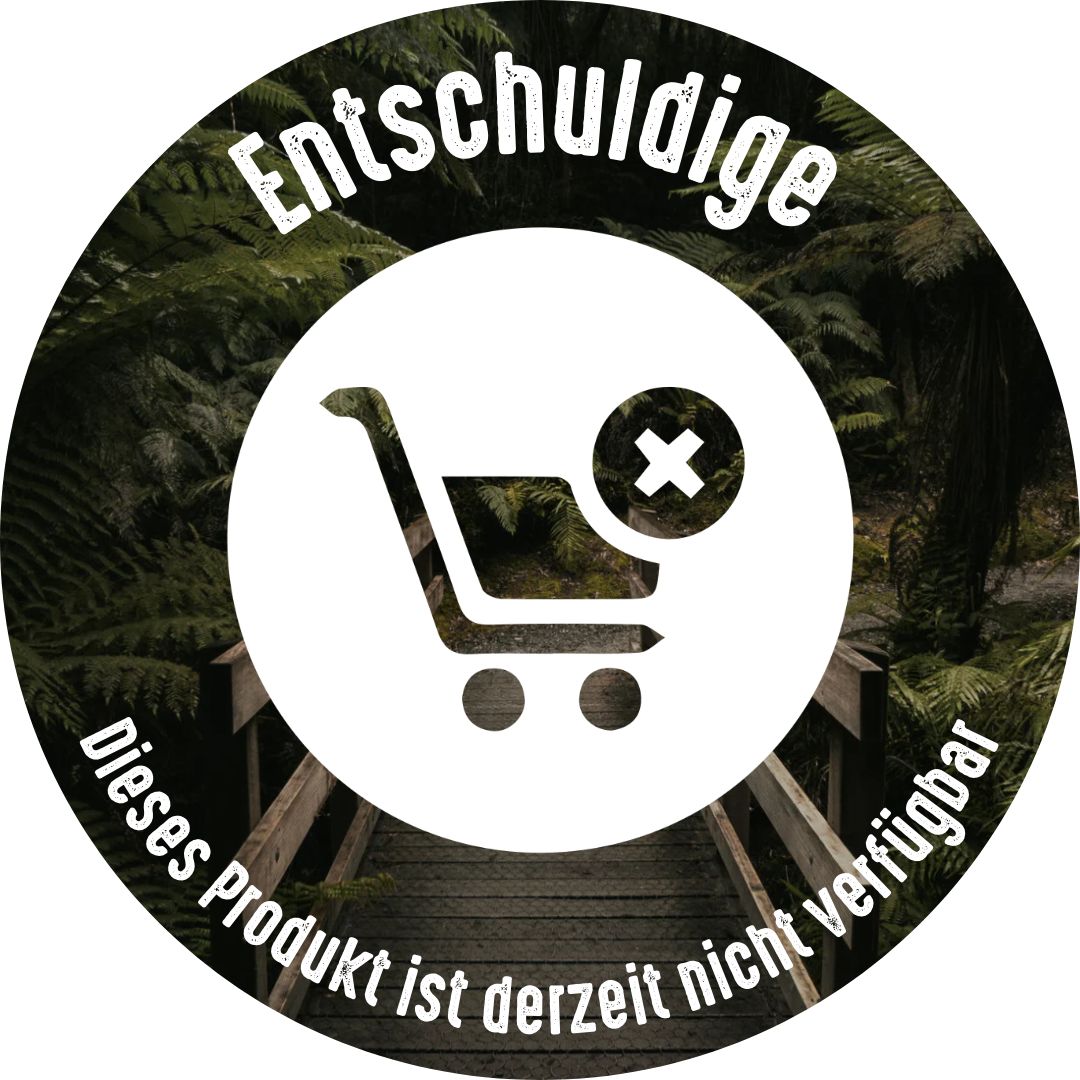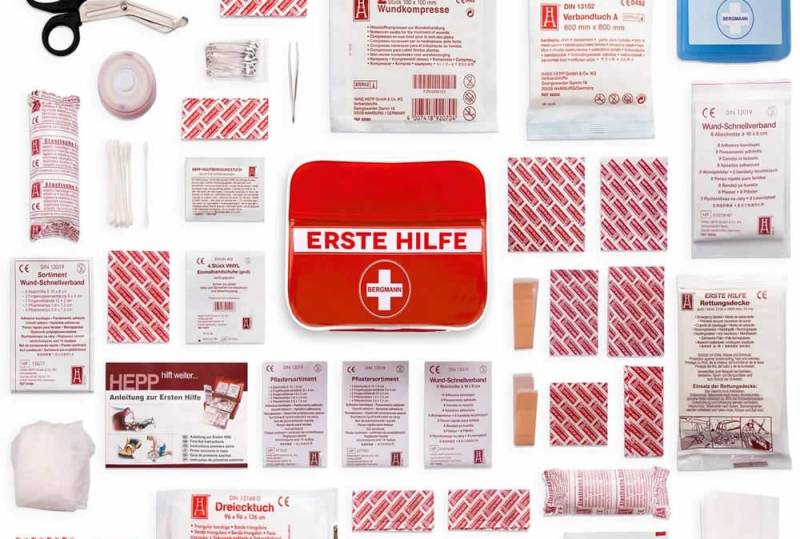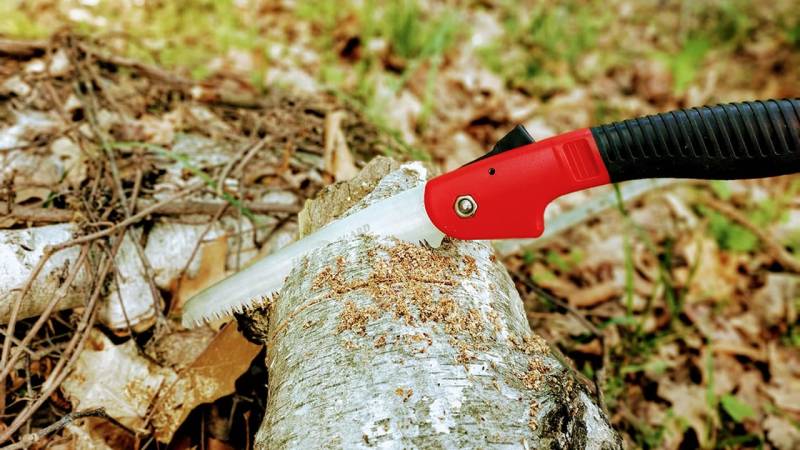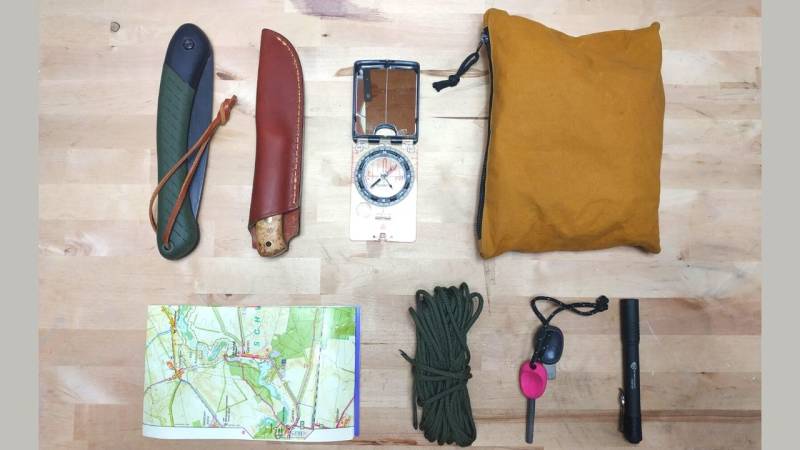
Survival Equipment: these 11 tools you need to survive in the wilderness
👉 The key facts from this guide
- Firelighter: Igniting a fire in the wilderness is essential. It protects against cold, keeps predators away, and allows you to prepare food or boil water.
- Survival knife: A fixed blade knife is your most important item. It helps you create many things or work with materials.
- Map and compass: These are durable, and water doesn't harm a compass. Only then can you be sure to orient yourself correctly.
- First aid kit: Take a first aid kit, you should have this with you at all times.
- Saw: With a saw, you can quickly and quietly saw through logs or create firewood. Or you can build a shelter or tripod from large branches.
- Good clothing: The weather is unpredictable. It can change within hours. From sun to rain, from rain to snow. Therefore, proper clothing belongs in a survival kit.
Did you know that an average person can survive up to 3 weeks without food?
But only a maximum of 3 days without water? And only 3 hours with a low or high body temperature?
There are essential equipment items that you must take with you into the wilderness. They ensure your survival in emergency situations.
In this article, I will present 11 survival items that you need not end up in a disaster. Afterward, you will know exactly what should not be missing in your backpack.
Basically, the more items that secure your survival, the better for you.
The problem: You can't take every piece of equipment with you. That would be too heavy, and you wouldn't get anywhere.
Therefore, it is important that you pack the right items in your survival gear. You must always have these in your survival kit.
Here are my 11 most essential items for survival.
What is the purpose of survival equipment?
Let's get straight to the point: Humans have basic needs that must be met.
If you DO NOT meet your needs, you will feel worse mentally and physically. In the end, death awaits you.
The basic needs are:
- Food
- Water
- Shelter
- Warmth
I assume that you are not underwater because then air would be another need of yours.
Furthermore, you must not neglect certain psychological factors. So, you require enough sleep, personal space, and physical care (hygiene).
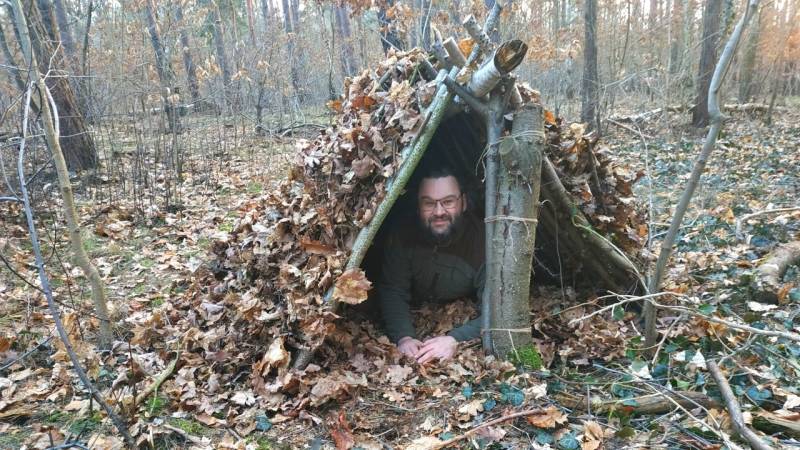
All the featured equipment for your survival gear can meet the basic needs in the wilderness. Provided, of course, you have the necessary skills and have learned the various techniques.
Therefore, I advocate the principle: Your equipment is only as good as you can apply it.

An example: A knife is of no use to you if you don't know what it can be used for. Or a Firesteel won't help you if you don't know how to ignite a fire with it.
So, you see how essential it is for you to expand your skills. But you have arrived at my website and here begins your journey of learning.
1. Fire Starter
Igniting a fire in the wilderness is one of the most important things. It protects against cold, which becomes very uncomfortable.
In addition, a fire keeps predators away, and you can use it to cook food or boil water.
A campfire is so versatile that many people don't even know what it can be used for. There are numerous uses even for the ashes.
I recommend that you add three items to your survival equipment to ignite a fire.
- Firesteel or magnesium fire starter (get it here)
- These are quite easy to use and should never be missing from your equipment.
- Matches and lighter
- These two fire starters are essential. Read here how to ignite a fire with just one match and also check out alternatives for making fire.
It is also significant to have suitable tinder. Either you have made some yourself or you use Atwood, birchbark, or you get instafire fire starter.
I also recommend my article: 22 Examples of How to Get Tinder. Always pack two to three tinder in your pockets while you're on the go. This way, for example, it will dry out quickly.
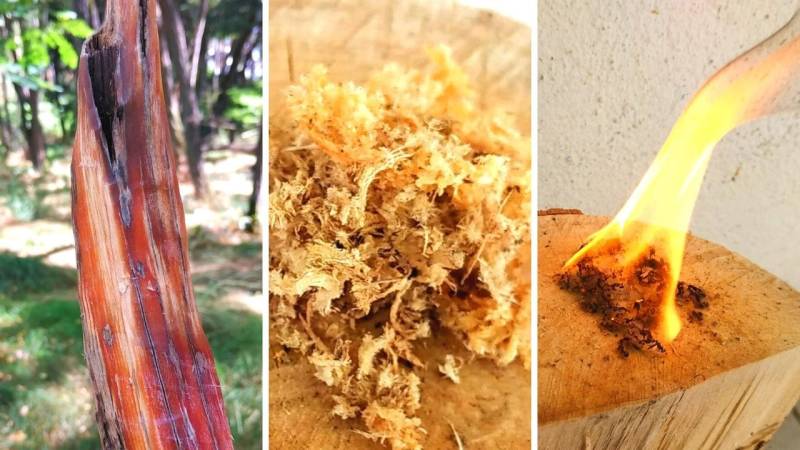
You should carry the fire starters in waterproof containers and store them separately in your backpack. You don't need to protect a fire steel from moisture.
Also check out my guide How to quickly and easily start a fire with a Firesteel (Guide + Video). This way you'll learn how to start a fire with a Firesteel.
2. Survival Knife
If you are out in the wilderness, you will have to tackle many tasks. A fixed blade knife (non-folding, full tang steel) will greatly assist you in doing so.
A knife is basically your most important item in your survival equipment. Because with it you make many things or work on material.
You should make sure that it is a high-quality and very sturdy knife. Imagine you have to fell a small tree with your knife. Then it must not break apart or bend when you strike the knife with a thick trunk.
That's what makes a survival knife:
- Rugged all-purpose knife for heavy-duty work (splitting, prying, chopping, striking)
- Thickness 3 to 6 millimeters, thicker than a bushcraft knife
- Length approximately 12 - 18 cm, has a longer blade than a bushcraft knife
- Heavier and less maneuverable than a bushcraft knife/pocket knife
- Not as good cutting performance as a bushcraft knife
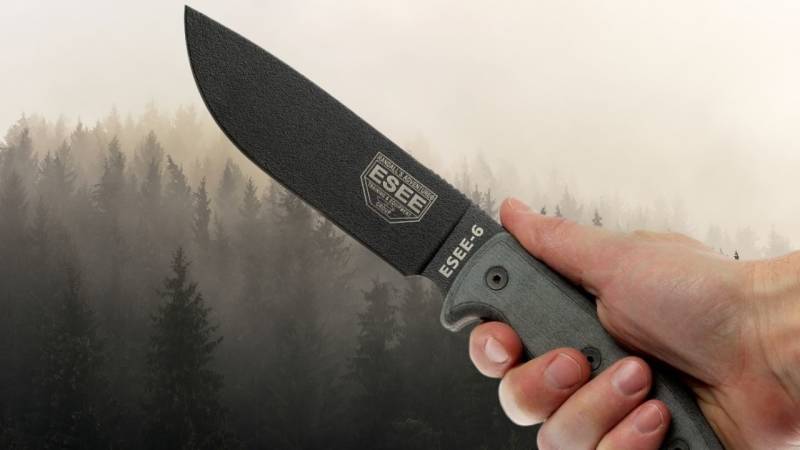
Survival knives are larger than bushcraft knives and pocket knives. This type of knife is considered a jack-of-all-trades.
I recommend not folding knives, pocket knives, or multitools. These designs are not as sturdy and durable as fixed-blade knives.
You use survival knives for the following:
- To split or chop branches or cut thick materials (source)
- You can also fell small trees with a survival knife
- You use it to pry because they are very thick
- Cut ropes
- Sharpen sticks
- Gut and skin animals (see my video)
- Use as a defense
Of course, you need to be able to handle such a large knife safely and effectively. Take a look at my Knife Basics course from the Wildimpuls Program (in German) for that.
Make sure your knife is properly sharp when heading into the wilderness. I will show you how to sharpen your knife in the field in my guide.
Furthermore, here applies: It's better to take a simple replacement knife with you. If you only have one, and you lose it, your situation will deteriorate significantly.
If you're looking for a really good knife for your survival gear, don't buy one for 20 €. These knives don't last long and the steel is usually not solid enough.
I have written a comprehensive buying guide specifically for survival knives - read it here.
Here are more recommendations for durable and popular survival knives:
- ESEE Model 6, Plain Edge, Blade Length: 14.6 cm, Handle: Micarta
- ESEE Model 5, Partially Serrated Blade, Blade Length: 13.34 cm, Handle: Micarta
- Ka-Bar Becker Companion, Blade Length: 12.7 cm
- GERBER Strongarm Coyote Knife with 12.38 cm Blade
- Fallkniven A1XB Expedition Knife, Blade Length: 16 cm
- Schrade Outdoor Knife F46 Frontier, Blade Length: 12.83 cm
3. Map and Compass
Sure, you can take a GPS device with you and rely on it. But that would be too easy, and it's also not certain how long the battery will last. Or it gets wet and the technology fails.
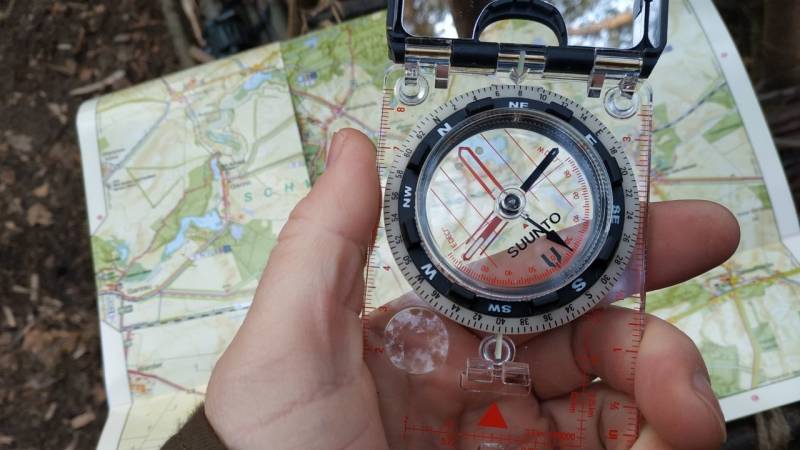
You also have to be able to read maps and operate a compass. Both are sturdy and water does not harm a compass. Only then are you on the safe side to orient yourself correctly.
Using a compass and walking in the right direction is not as easy as most people imagine.
Make sure to read my guide "How to Use a Compass with a Map?" and participate in a Survival Training.
Cards are also lightweight and easy to transport. If you take cards with you, pack a road map as well as a topography map with your survival equipment.
Moreover, here applies: Do not choose the cheapest compass. I recommend the Suunto compass. This compass is pricier than other models, but can be used worldwide and has a 360-degree rotating bezel (note, there are other units of measurement).
You will also receive a magnifying glass and a mirror.
You use the magnifying glass not only for enlarging, but also to make a fire with the sun. The mirror is for compass use, but also for removing small particles from the eye or for giving distress signals in case of emergency.
4. First Aid Kit
Even if you only go into the forest for a short time: Take a first aid kit with you. You should have this with you at all times.
It is important that you be able to apply a pressure bandage. This is necessary especially for severe injuries with bleeding. Most first aid kits contain the materials needed to apply a pressure bandage.
There are special first aid kits that are suitable for camping and travel. These are particularly recommended if you are out in the wilderness.
So get yourself a first aid pocketbook (PDF for download) and study it BEFORE your survival adventure. The most essential maneuvers should be familiar.
Also read my article: First Aid Kit: assembling and applying. There I also show you in a video how to apply a pressure bandage.
And you know what's so great about the first aid kit? It contains a rescue blanket that you can use as a tarp to protect yourself from rain.
5. Saw
There are different saws and each person handles them well differently.
Regardless of whether it's a bow saw, folding saw, hand chain saw, wire saw, hacksaw, or tension saw - the most important thing is that you have one in your survival equipment. The saw should be robust and lightweight.
With a saw, you can quickly and quietly saw through logs or make firewood. Or you can build a shelter or a tripod out of large branches. Many tasks are easier with a saw. You usually have plenty of wood as a raw material.
Take a look at my article: Why a handsaw belongs in your backpack and The Bahco Laplander: The folding saw I've been using for over 5 years for survival & bushcraft.
6. Good Clothing
The weather: unpredictable. It changes within hours. The sun turns into rain, rain turns into snow.
But there is a solution for that: The right clothing belongs in survival equipment.
Even if you go into the wilderness on a hot summer day, you have to expect the worst.
You don't need hypothermia on your survival adventure at all. This is the main cause of most human deaths in the wilderness.
A fire can go out, or the heat may not be enough to warm you properly.
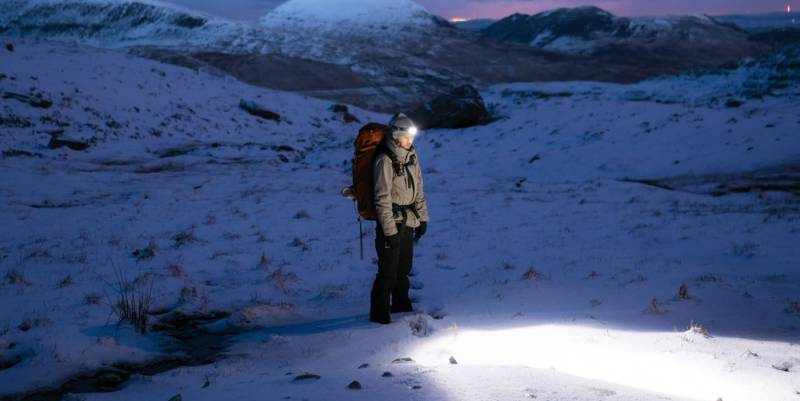
Avoid clothing made of cotton in general.
If it gets wet - through sweating or rain - it doesn't dry as quickly as other fabrics.
The problem with this is: You cool down through evaporative cooling. You become stiffer in your movements, making you more prone to injuries such as strains, sprains, or slips.
In addition, you can catch a cold and pneumonia.
Given this, I recommend clothing made of synthetic materials. Wool materials are also recommended.
Artificial fiber dries faster and therefore provides better insulation, as no evaporative cooling occurs. Additionally, these materials are often water-repellent.
Furthermore: Durable and comfortable shoes are a must. Do not skimp on the selection and do your feet a favor.
Also read
The Ultimate Guide: What to Wear for Survival Training and Bushcrafting? - The right clothing can make the difference between life and death in survival situations. In this guide, we discuss what you should wear outdoors.
7. Whistle
If you find yourself in trouble, your voice can quickly fail. Additionally, in general, your voice is not as loud as a whistle.
So pack a pipe as part of your survival gear, as it has a long range. It will draw attention to yourself and people nearby will be able to locate you quickly.
Pipes made of plastic are recommended as they are lightweight, float, and do not rust. It is best to wear your pipe around your neck.
kein Preis ermittelbar (B000SE9NMY)
8. Rescue Mirror
Imagine a helicopter is searching for you. Then the whistle won't help you either.
But a rescue mirror, also called a signal mirror, sun mirror or heliograph.
These lightweight, compact mirrors can reflect light over long distances and send signals to people far away.
This multifunction emergency tool is also available with a whistle. It is inexpensive, lightweight, and compact. And it saves lives when the going gets tough - so put it in your backpack with your survival gear.
9. Rope
A sturdy rope is an important survival tool and should not be missing from your survival equipment. The sturdy ropes are also called Paracord. You can use them for all kinds of connections and for your hammock, for pulling tree trunks or carrying firewood.
Take various strings with you, such as fishing line, clothesline, twine, and grill/roasting string. Tip: many Paracord ropes have fishing line and tinder braided into the core.
10. Water filter or water container
At the beginning of the article, I have already mentioned the water problem: If you haven't drunk any water within 72 hours, things will look miserable for you.
Optimally, you should drink at least one liter of water per day. If you engage in physical activity, such as in the wilderness, you need to consume even more water.
You could now take a lot of water with you. The issue: Water is heavy. One liter weighs one kilogram.
That means you can only take a few liters with you. The rest you have to find yourself.
And dirty water makes you sick. If you get sick in the wilderness, your situation worsens dramatically.
So pack a water filter with your survival gear. This way you can filter the water sufficiently.
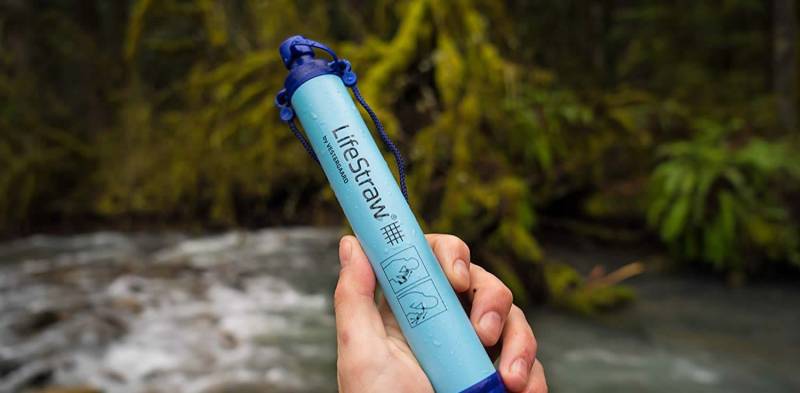
If you would rather not bring a water filter, be sure to pack a metal bottle with a lid (e.g., this one). With it, you can boil water, transport water, and collect food and water.
I even prefer a metal bottle because it is more versatile than a water filter. Additionally, it lasts longer than a water filter: a water filter can filter x liters of water, then it needs to be cleaned or the filter system replaced. You don't have that problem with a metal bottle.
Read my article about it Survival: the ultimate water guide.
11. Light Source
It's getting dark, complete darkness. The fire goes out because there is not enough firewood available. You can't see your hand in front of your eyes anymore. There is no flashlight available.
Disaster!
That must not happen. Complete darkness can cause fear and helplessness. You always need enough light.
If you are out in the wilderness, a flashlight is an essential part of every survival gear.
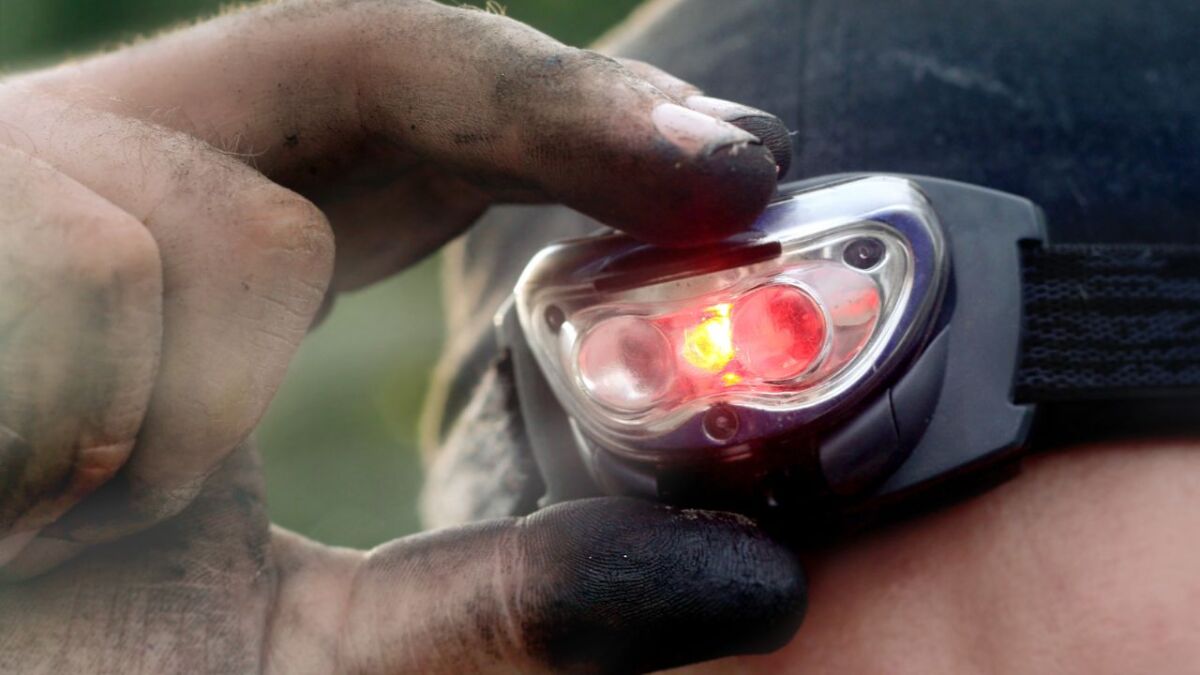
Flashlights have never been so lightweight, energy-efficient, and compact.
I recommend a headlamp, so you have your hands free - your most important tools.
My recommendations: the Black Diamond Storm 400, the PETZL Actik Core Headlamp, or the Ledlenser H8R.
Bonus item: Fishing set
Yes, a fishing set can be super useful when you find yourself in a survival situation and have no other sources of food available.
There is nothing worse than being hungry and having nothing to eat, right? With a fishing set, you can catch fish and satisfy your hunger.
And often it is many times easier to catch fish than animals on land. In addition, fish is easy to process and contains a lot of protein.
It is essential that your set is made of durable materials and contains all the necessary equipment items you need. You should also know how to assemble and cast a fishing rod to be successful.
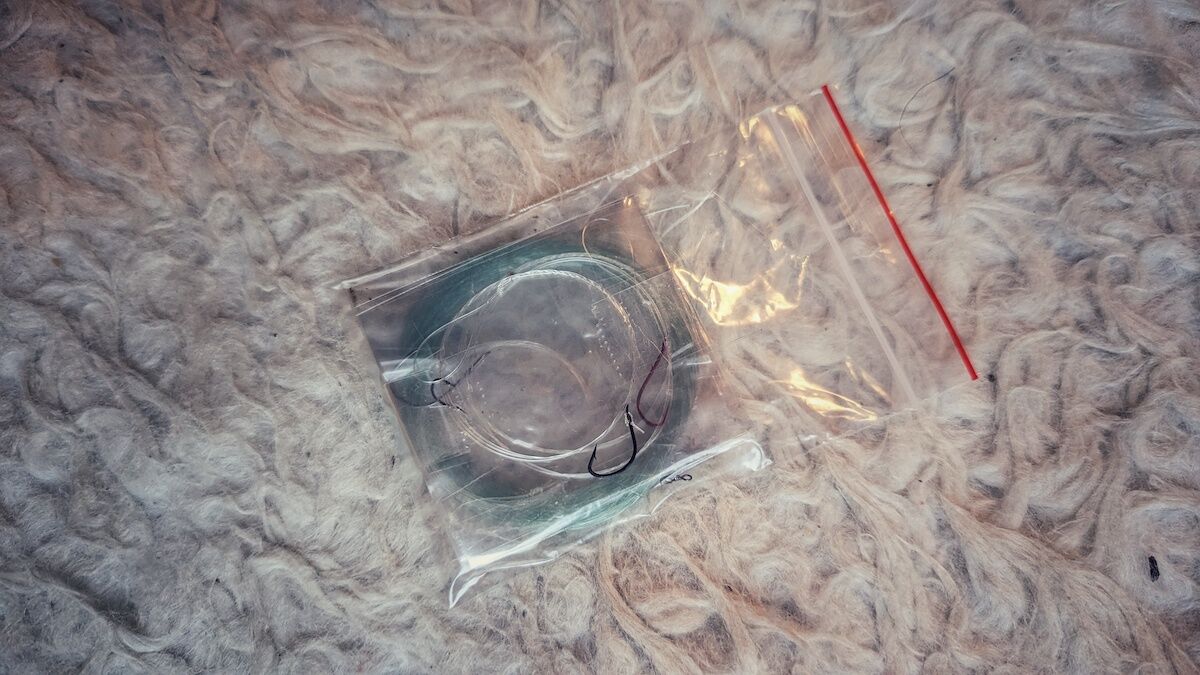
My recommendation for a fishing set:
- Hooks of different sizes, at least 3 pieces
- Tear-resistant fishing line, preferably braided, minimum 10 kg tensile strength
- Artificial bait and swivels, if there is still space in the fishing set
You pack these materials into a small bag and store them safely. If you exclude the artificial bait, you can even place this small bag under your shoe sole. This way, you always carry your survival fishing kit with you.
Your Backpack
I don't list the backpack as a separate piece of equipment because I consider it to be a given. Somehow, you have to transport your gear.
There is no backpack that I particularly like or dislike. But there are attributes that I like.
Therefore, make sure that it fits perfectly and has a chest and hip strap.
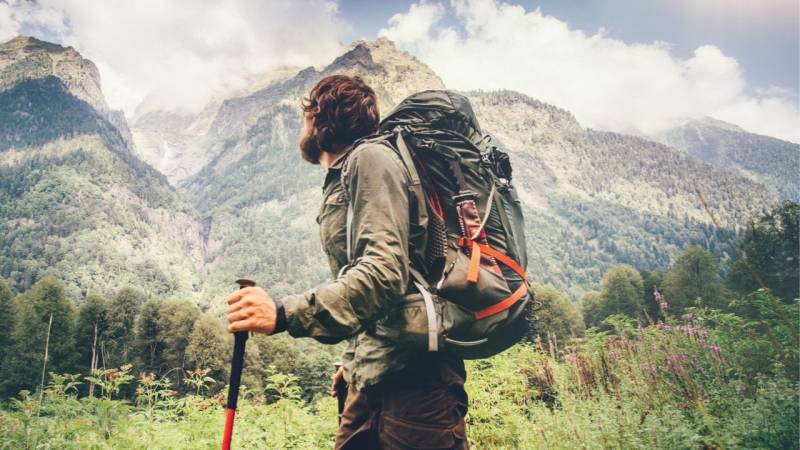
My principle: you don't notice a good backpack while hiking.
Furthermore, you must be aware that with a backpack, you may also have to run. So make sure that it fits perfectly and snugly against your body - like a part of your body.
You as an equipment item
Now you have a variety of items in your survival equipment, and you can use them to handle most emergency situations.
However, you must also know how to use these tools and handle them as effectively as possible.
Two more important elements are part of the overall package:
Knowledge as well as physical and mental fitness.
Your knowledge is the key to survival
I can only repeat: You have to be able to handle the objects. The best knife in the world is useless if you can't handle it.
So, before you embark on a real adventure, apply the items in a safe environment. Then you can try everything out and learn from it.
There are also many books and videos about the various items.
One Survival Training can also be conducted in Germany. (Check out my article Five great Survival Trainings in Germany for that. I have also listed the costs.)
And also read my article: The 7 most important survival tips for survival.
Physical and Mental Fitness
You have to be fit for the forest and the adventure. Your fitness is a crucial factor.
Surviving and mastering emergencies means stress. Even if you imagine it romantically now: Once you are in the situation, you have to make difficult decisions. You will develop fears and uncertainties that you did not know before. You must avoid panic.
Lighting a fire or building a shelter can be very exhausting. It may look easy in movies, but in real survival situations, it often requires hours of physical work.
Don't lose your optimism. If you're constantly at rock bottom during your adventure, even more things will go wrong. And things will go wrong - promised.
Imagine you haven't had any food for two days. How do you think your mood would be? You have to be able to deal with hunger. You can practice that, for example, in advance.
If you are physically and mentally fit, your chances of survival are much higher.
A healthy body and an attentive mind are therefore also part of the survival equipment.
P. S. A €20 survival paracord bracelet is not part of a survival kit. Why not, I explain in my article "What is a survival bracelet?".
Did I forget something? What do you think about the list? Write it in the comments.


Author of the guide
Martin Gebhardt
Hey, I'm Martin. On my blog, you will learn the basics and numerous details about living in the wild. I think survival, bushcraft and the good life in nature are the keys to happiness. Find me here on Instagram or on YouTube. You can find more about my mission on the About Me page.
Since this is a gear guide, here ...
🤝8 reasons to trust my recommendation
-
Practical Experience: I have tested most of the products I recommend under extreme conditions myself.
-
Independence: As a wilderness mentor, I am not tied to any specific brands - this means my recommendations are unbiased.
-
Expertise: My many years of experience allow me to understand the intricacies and details of various products that a layperson might overlook.
-
Target group understanding: I understand the needs and challenges of outdoor enthusiasts, from beginners to seasoned experts.
-
Quality focus: I attach great importance to quality and longevity. These are characteristics that are crucial in the wild.
-
Clear communication: I try to explain the pros and cons of each product clearly and understandably so that you can make an informed decision.
-
Currentness: I always keep my guides up to date and adapt them to new findings or products.
-
Community Feedback: I work in wilderness schools, teach courses myself, attend courses and am active in various outdoor and survival communities and therefore integrate the feedback and experiences of others into my recommendations.
So when I introduce the best survival knives or flashlights, you can be sure that every recommendation is based on solid experience and extensive knowledge.
Was this guide helpful?
111 people found this guide helpful.
4.93 out of 5 points (113 Ratings)
Comments (0)
This post may contain affiliate links. So if you click on the links and make a purchase, I will receive a small commission at no additional cost to you. Click here, to learn more about it.



